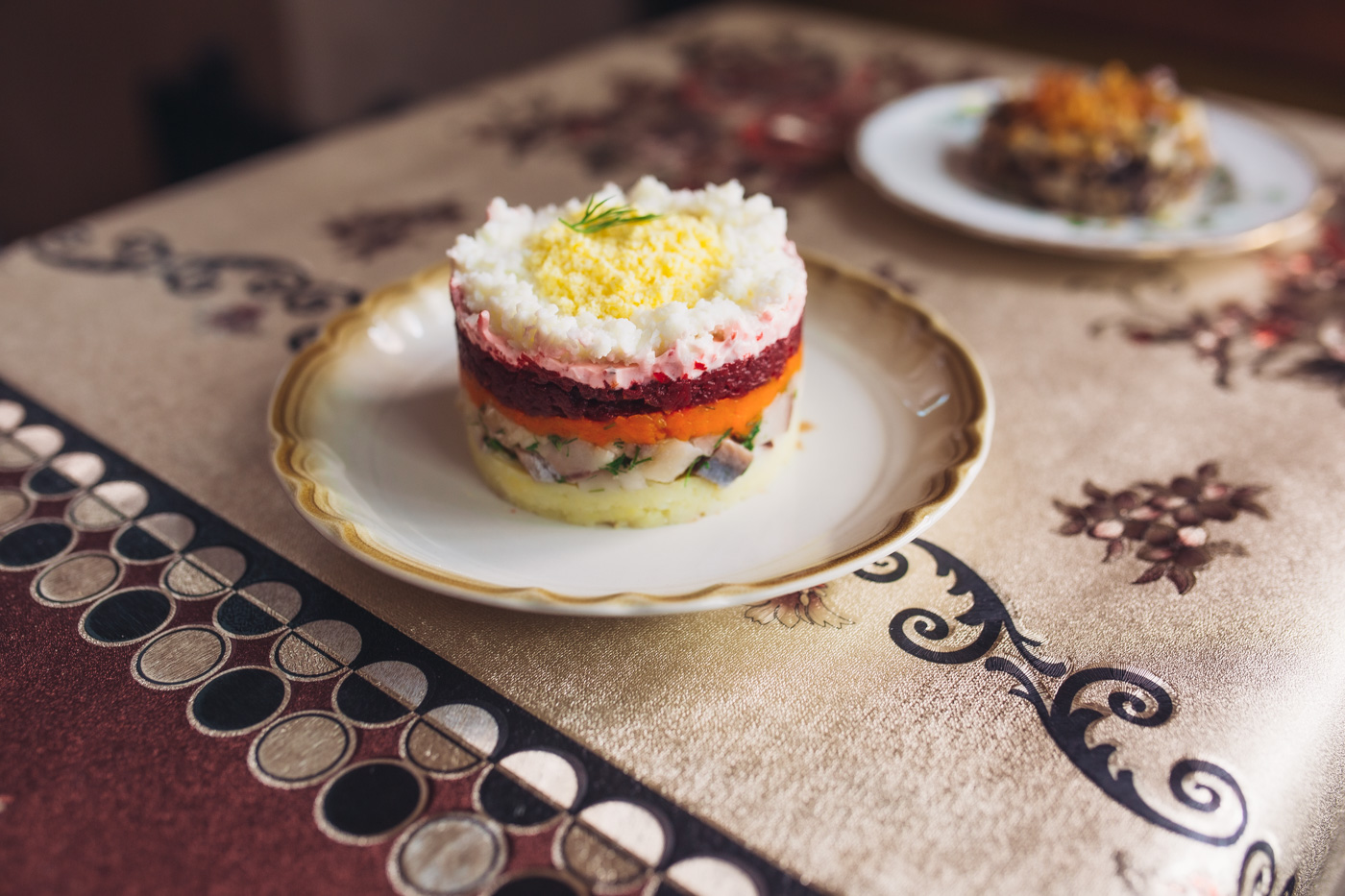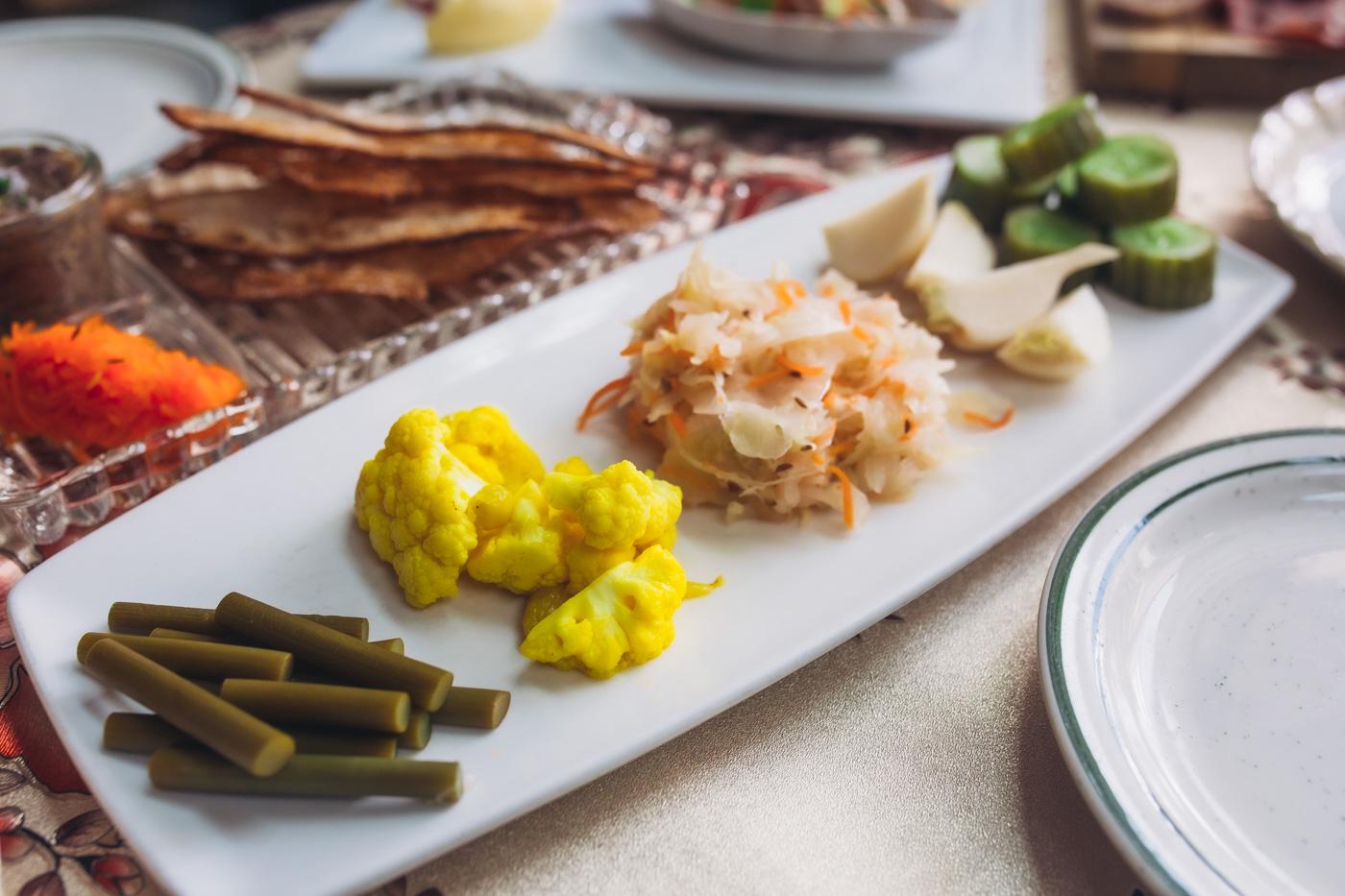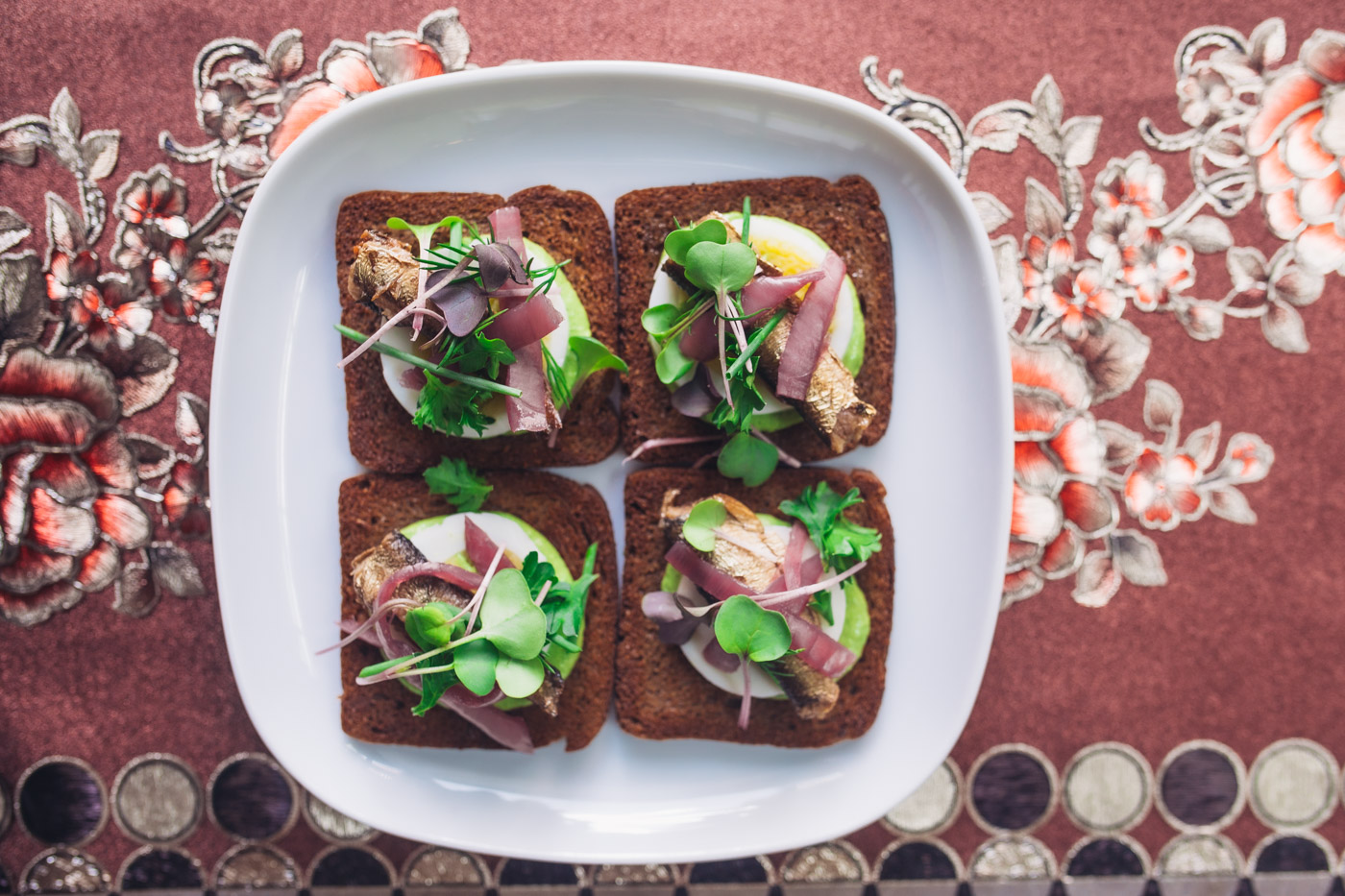Sip, Bite, Repeat: A Guide to Zakuski
Whether simple or extravagant, zakuski aren’t just vodka chasers. They reflect the essence of Slavic hospitality.
Editor’s Note: this story is published in partnership with KCET / PBS SoCal and in association to The Migrant Kitchen, our Emmy-winning documentary series now on its fourth season. This article was written before the Russian invasion of Ukraine on February 24, 2022. Alissa Timoshkina, quoted below, has since co-founded #CookForUkraine, a movement dedicated to sharing recipes and raising financial support for Ukrainian children and families—a necessary reminder that many Russians oppose the war and that a culture is not immediately reflective of its regime in power.
Cross oceans, borders or languages and a meal will meet you there. Where Italy has its aperitivo and Spain its tapas, Russians gather around their zakuski. Derived from the meaning of “taking a small bite,” zakuski are savory morsels meant to welcome the weary traveler, especially after the all-important shot—or shots—of vodka.
“Vodka is essential,” says Alissa Timoshkina, born and raised in Siberia and author of Salt & Time: Recipes from a Russian Kitchen. “Otherwise, zakuski are no longer performing their role as vodka chasers.”
Unlike other pre-dinner starters, zakuski can be considered a stand-alone meal. They perfect the art of hosting, little forkable bombs of flavor that are just as much about presentation as they are a service to soak up said vodka. As early as the 1700s, czars and aristocrats served zakuski to guests gathered outside their dining rooms, many of whom had traveled long distances through the frozen Russian countryside. (And who, mind you, would turn down a warming shot of vodka after such a frigid trek?)
“Abundance, and the sense that you were regaling others, goes to the core of who the Russians are and Russian hospitality,” explains Darra Goldstein in the second episode of season four of Life & Thyme and KCET’s The Migrant Kitchen. Goldstein is a Professor Emerita of Russian at Williams College, food scholar and cookbook author. “You’re always meant to serve your guests the best that you have.”
The tradition carried through the 1800s to the communism of the Soviet era. Given the cultural uniformity at the time, it was often only in the flourish of a zakusochnyi stol, or snack table, that one could show some personality.
“The wonderful thing about zakuski is that a meal like that always creates a sense of plenty, even back in the Soviet days,” says Timoshkina. “Zakuski would turn a meal into a feast as you’d admire the rich tapestry of plates on the table. They might contain the simplest of things like fermented cabbage, some smoked sausage and rye bread with salted fish, but it always looks and feels so festive.”
A properly designed zakuski spread will position colorful bowls and dishes until no sign of the tablecloth remains. Its flavors offer an array of the preservation tactics Russians have relied on for centuries. Salty, smoked, pickled—it all finds its place on the table, which is thought to bear a similarity to the Swedish smorgasbord as well, possibly reflecting the one-time fluidity of Swedish, Polish and Russian borders. In Poland, zakuski are known as zakaski.
With a mix of hot and cold recipes, bold tastes, and that Russian darling of condiments—mayonnaise—you’re ready to consume your vodka. Fat, Timoshkina says, is a necessity to temper the alcohol’s effects and why many zakuski will include lard, butter or sour cream. If there is any rule to zakuski, it’s that a bite should always follow a drink. Vodka isn’t about getting drunk; it’s an opportunity to toast to life.
“Vodka originally wasn’t even called vodka,” Goldstein explains. “It’s a diminutive of voda, which is water, one of the elements for life … You can’t just drink and toss it back without toasting. You give thanks.”
With that, here are a few of the most popular zakuski to fill your table, cushion your stomach, and welcome in the (hopefully hungry) visitor.
Salat Olivier: A cold, mayo-dressed salad invented by the Belgian chef Lucian Olivier, who worked at the Russian Hermitage in the 1860s. The original secret dressing recipe has been lost to time, but modern interpretations will include potatoes, peas, carrots, hard-boiled eggs and boiled meat.

“Herring Under a Fur Coat”: Popular at New Year’s celebrations, this dish layers pickled herring beneath a shuba, or “fur coat,” of shredded potato, beet, carrot, mayonnaise and hard-boiled egg.
Smoked Fish: Salmon, herring and sturgeon are the most popular. Caviar—either black and served on a buttered blini or red salmon roe with white bread and sour cream—would also be included.

Pickled Vegetables: Cabbage, tomatoes, beets, mushrooms and cucumber are staples, but you’ll find almost anything that grows pickled in Russian cuisine. (The poet Pushkin favored pickled apples.)
Vegetable Caviar: Minced “caviar” made from eggplant, mushrooms, peppers or other vegetables that can be used as a relish or spread on toast.
Pirozhki: These yeasted hand pies can be either baked or fried and stuffed with meat, cabbage or potato.
Pelmeni: Similar to ravioli, these Russian dumplings are filled with ground meat and onion and boiled in broth. Serve with vinegar or a dollop of sour cream and fresh dill.

Bread: Along with a selection of cold cuts, cheese and salted butter, don’t forget a loaf of traditional Russian black bread, Borodinsky bread (a slightly sweeter rye made with molasses and coriander), sourdough or pumpernickel. More than any other food, it’s bread that holds the deepest significance for Russians, a tie to its agrarian roots and symbolic of health and well-being.



Our comments section is for members only.
Join today to gain exclusive access.